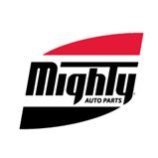-
Welcome to Auto Parts Forum
Whether you are a veteran automotive parts guru or just someone looking for some quick auto parts advice, register today and start a new topic in our forum. Registration is free and you can even sign up with social network platforms such as Facebook, X, and LinkedIn.
Maintenance Intervals: Lack of Service Can Lead to a Catastrophic Event
-
Similar Topics
-
By Counterman
link hidden, please login to view brought together its global network of suppliers for the bi-annual Global Supplier Event, held earlier this month in Ludwigsburg. Guided by the motto “Transform to Perform – Perform to Transform”, link hidden, please login to viewhighlighted the pivotal role of suppliers in the company’s ongoing journey of transformation and performance excellence, the company said. Over 50 companies from 17 different countries got the opportunity to network and discuss topics around procurement, filtration technologies and execution management. “In this uncertain environment, is more important than ever to stay innovative, competitive, and fast when it comes to strategy execution,” said Hanno Höhn, Chief Procurement Officer at the MANN+HUMMEL Group. “Because only together, we can transform successfully”.
“Our goal is to be at the forefront of advancements, ensuring that we not only keep pace with industry changes but also drive them,” said Kurk Wilks, CEO and President of the MANN+HUMMEL Group. “We thank our suppliers for their commitment to help us meeting our strategic objectives and market demands. Together, we can capitalize on emerging opportunities and drive sustainable growth,”
Supplier Awards 2024
MANN+HUMMEL recognized its top suppliers for their exceptional contributions in various categories:
Partnership: Anhui Zhongding Sealing Group, Atlantic Packaging, Gaubb Industries Corporate Social Responsibility: Envalior Risk Management: Zhejiang Yinlun Machinery Quality: LADESA Logistics: ZALESI Technology: TK Group Commercial Excellence: Hollingsworth & Vose, Wallner Expac, Zhenhan Jiangxi Science and Technology The post
link hidden, please login to view appeared first on link hidden, please login to view.
link hidden, please login to view -
By Counterman
link hidden, please login to view announced a national rebate promotion to help retailers and service shops across North America propel filter sales in time for the summer vacation travel season. Consumers can receive up to $15* on qualifying oil, air and cabin air filters under the Purolator, PurolatorTECHTM, PurolatorBOSS® and PurolatorONETM brands for purchases made between July 1 and August 31, 2024. To help promote the campaign,
link hidden, please login to viewsaid it’s offering free point-of-sale marketing materials to all participants, including posters, window clings, tear-pad rebate forms and shelf talkers. “This rebate comes at the perfect time for budget-conscious families looking to prepare their vehicles for road trips while making their vacation travel even more affordable,” said Daryl Benton, vice president of sales and marketing for the automotive aftermarket with MANN+HUMMEL.
Rebate forms and additional information on the promotion are available
link hidden, please login to view. *Consumers may mix and match up to three items. Maximum rebate payout is $15. Limit one rebate payout per customer, per household.
The post
link hidden, please login to view appeared first on link hidden, please login to view.
link hidden, please login to view -
By Mighty Auto Parts
The post
link hidden, please login to view appeared first on link hidden, please login to view. When diagnosing engine performance complaints such as misfire symptoms, be advised that several systems and components can contribute to those symptoms. When considering single or multiple misfire codes, some checks may seem farfetched but trust me if not all are considered the symptoms can elude the most experienced technician, resulting in a misdiagnosis. When this […]
The post
link hidden, please login to view appeared first on link hidden, please login to view.
link hidden, please login to view -
By carbdoc
I cannot find a remanufactured brake booster for my 1978 Dodge D-150 truck with 400 c.i.d. engine to save my life! Yes, I can send mine out for rebuilding and hope that it comes back correctly repaired (or comes back at all), but I don't want to take my truck completely out of service while I wait for it to (hopefully) be correctly rebuilt. I would, however, gladly settle for a "loose" rebuildable core.
If anyone reading this has a rebuildable core that they will sell to me, I would be quite grateful.
Jeff
-




Recommended Posts
Join the conversation
You can post now and register later. If you have an account, sign in now to post with your account.
Note: Your post will require moderator approval before it will be visible.